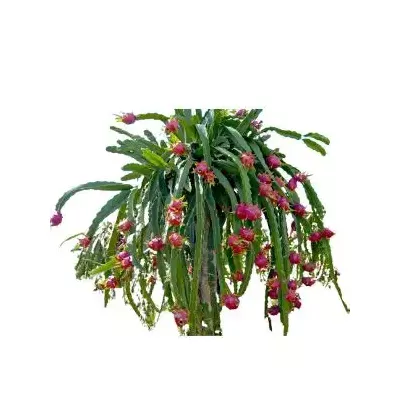



The dragon fruit, pitahaya, is a climbing cactus that produces very attractive and delicious fruit.

Pay using UPI, Card or Netbanking

Shipping within 3 working days
Dragon fruit is native to Mexico and Central America. It is visually a very attractive fruit. Although pink is most common, a large number of dragon fruit varieties in different colours are present.
The dragon fruit plant belongs to the cactus family and requires very little water. Also a well-drained soil is a must for this plant. Plenty of sunlight and air circulation is needed.
Only organic manures are used for dragon fruit cultivation. Pesticide use is also not needed. Given proper care, fruiting starts within a year. Starting in May, the fruiting season continues until October.
The dragon fruit plant requires a pillar-like structure of about 6 feet to climb and support itself. A strong trellis could also be used. The fruit is produced at the tips of the branches. Occasional deep watering is ideal, but ensure the soil is dry before watering again.
The fruit is oblong shaped with a size of about 12 cm. It has a sweet taste and a slightly grainy texture. It is high in fibre and antioxidants and is also a good source of vitamin C and B vitamins.
Uncut dragon fruit have shelf life up to two weeks. Hence, it is usually eaten unprocessed. But it can also be used to make products such as jams and jellies.
Data sheet